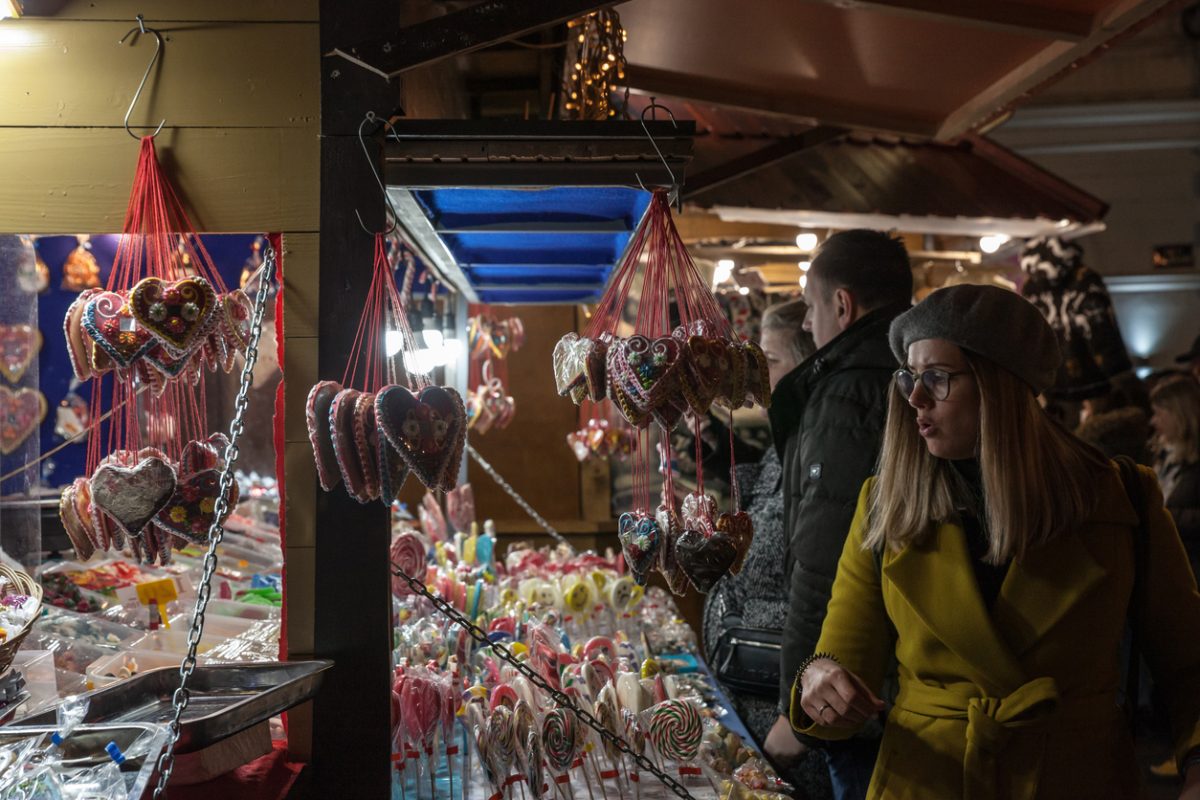In Serbia at Christmas, you’ll experience a winter wonderland where age-old customs and contemporary festivities blend seamlessly.
From the twinkling lights of Belgrade to the snow-covered landscapes of Serbian mountains, each corner of the country rings out in holiday cheer.
Indulge in its rich cuisine, partake in enduring traditions and enjoy the chilly winter weather.
Here’s all you need to know about Serbia at Christmas.
What’s Serbia like at Christmas?
As an Orthodox country, Serbia’s Christmas is mainly focused on one thing – family.
It’s the time of the year when Serbians are surrounded by loved ones and welcome the beginning of the new year together, taking part in many traditions which have been passed down through generations for hundreds of years.
The feeling and the vibe of the country during this time is warm and caring.
Streets and squares are also beautifully decorated, with many local vendors setting up their shops and offering you a taste of their local cuisine.
What to do in Serbia at Christmas
Take a walk around Belgrade, enjoy the festivities in Novi Sad, go skiing or soak in a spa. There are so many ways to enjoy a Serbian Christmas!
1. Explore the Incredible City of Belgrade
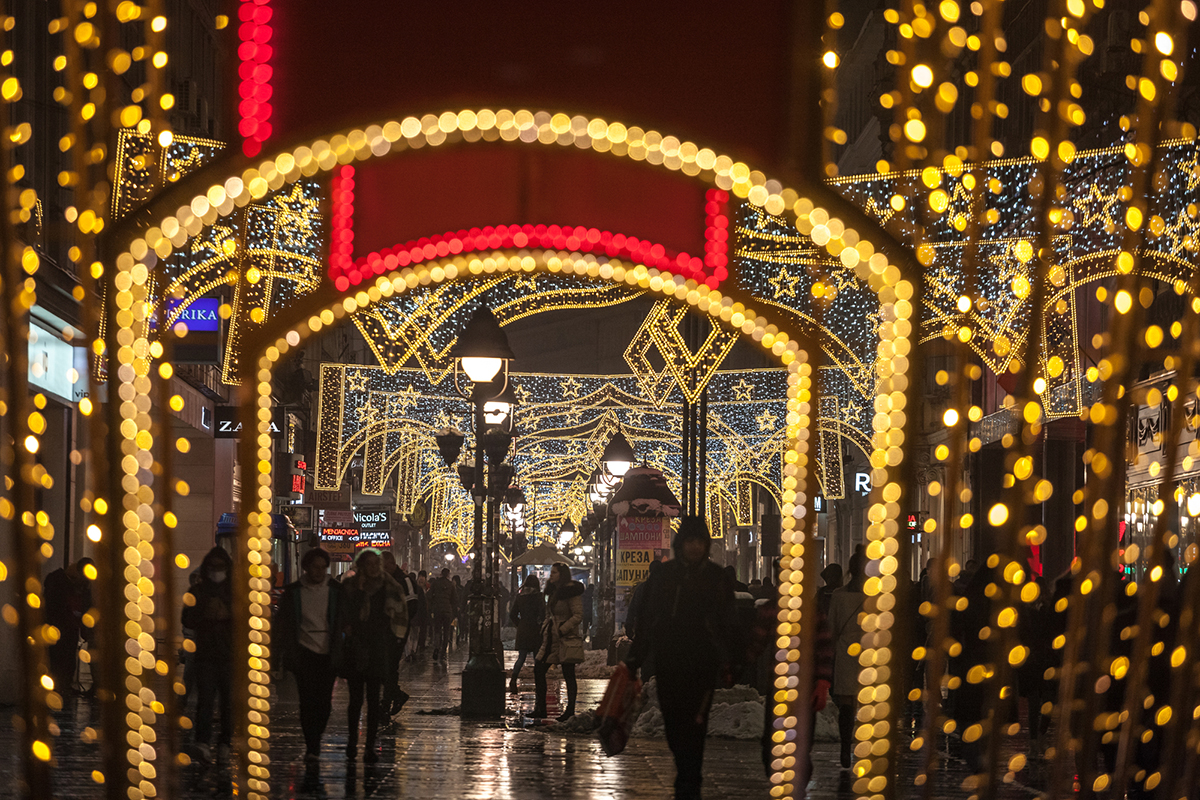
There are not enough words to describe how Belgrade feels at Christmas.
With so many things to try and see, you’ll definitely need a couple of days to complete your bucket list.
Start off your journey at the Christmas market in Knez Mihailova, where you can try many Christmas food and drink specials and find some beautiful traditional ornaments and souvenirs.
You can also participate in the annual Santa Claus race, you’ll just have to find a fitting costume first!
If running isn’t your style, but you still want to stay active, visit the Pionir Ice Hall and do some ice skating at one of the biggest ice rinks in this part of Europe.
After all that exercise and sightseeing, you can relax and enjoy traditional Serbian dishes at one of many restaurants in Skadarlija.
If you can, try to go there for dinner – there is usually a rich music program in the evening.
Check out our full guide to Belgrade in the winter!
2. Visit Novi Sad – Serbia’s Capital of Culture
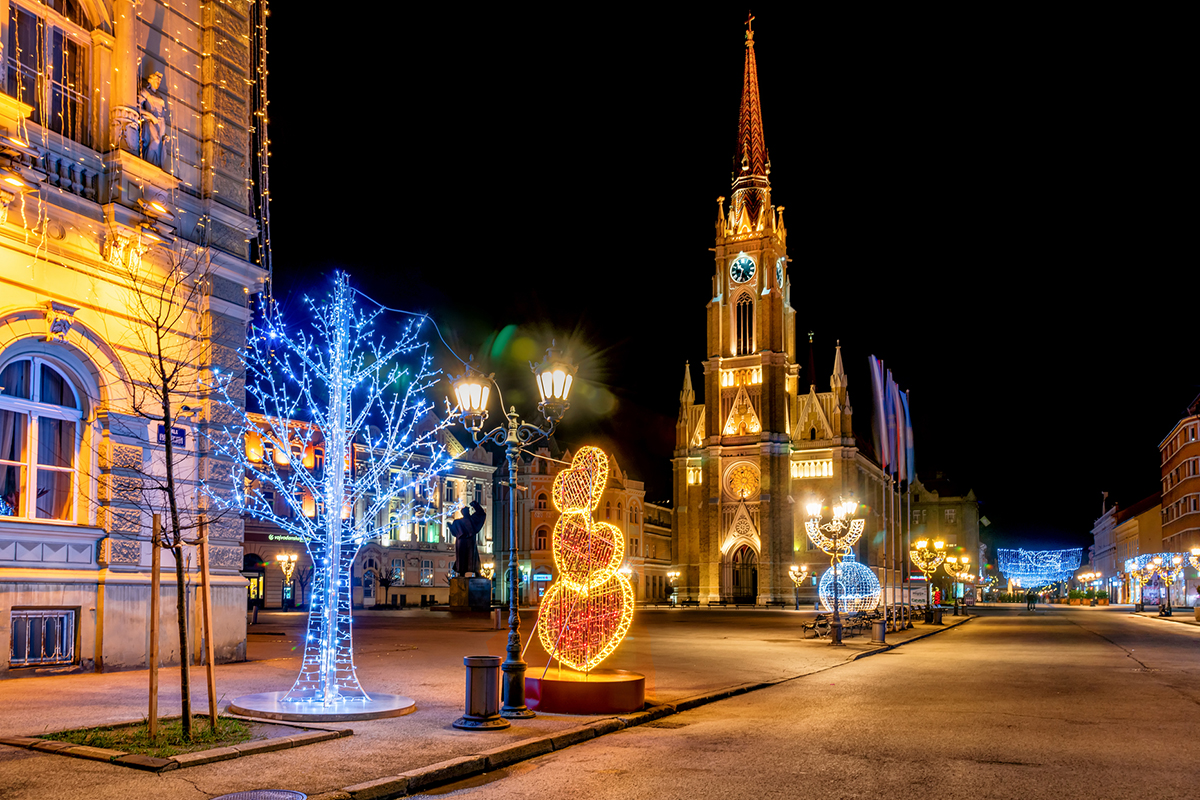
Before Belgrade became the metropolis it is today, Novi Sad was the centre of cultural events in the country.
But nowadays Novi Sad is a much calmer and quieter city. Still, there’s plenty to enjoy!
The city’s home to the first and oldest Christmas market in the country – it’s still incredibly popular and attracts a lot of tourists from Serbia and other countries.
The biggest attraction has to be the big Singing Christmas Tree, where choirs of adults and children perform almost every day.
You can also take a ride in one of the horse-drawn carriages, which will take you through all the decorated streets in the centre of the city.
After exploring the centre, head up to the Petrovardin Fortress.
It’s the most beautiful at this time of the year thanks to the thick layer of snow that coats it.
You can hike through it for a bit and later relax at one of the restaurants that overlook the rest of the city.
Be sure to visit the Gardoš Tower as well, it’s one of the best places for photos in the entire city.
3. Spend Your Day on the Ski Slopes of the Serbian Mountains
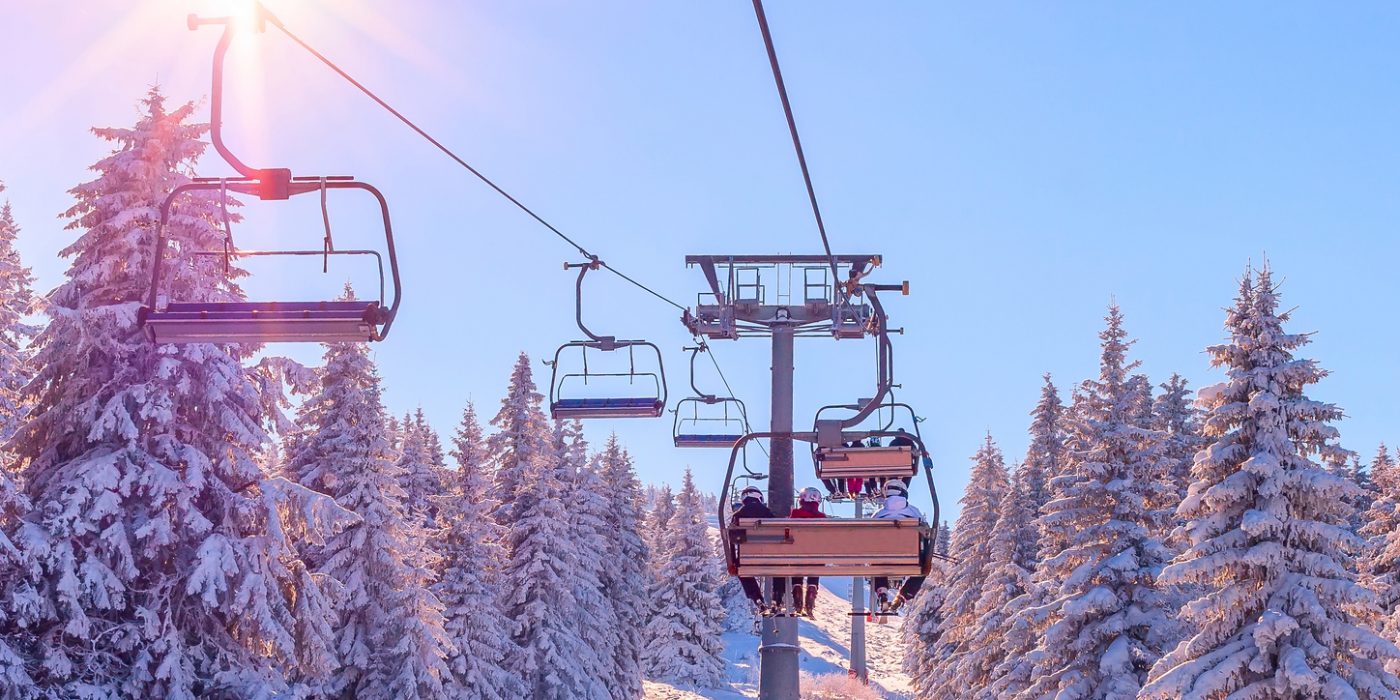
Most of the Serbian mountains are protected as national parks, and for good reason.
You can’t understand the natural beauty of these mountains without seeing it for yourself!
This becomes even more true when they are covered in snow, as there’s nothing like a quiet hike in the forest that looks like a scene from a fairytale.
This also makes it great for skiers and other winter sports enthusiasts to enjoy some fresh powder.
The largest resort is Kopaonik. With a diverse range of trails suitable for beginners and seasoned skiers alike, Kopaonik offers a spectacular blend of natural beauty and top-notch skiing facilities.
Although other mountains aren’t as good for skiing as Kopaonik, many of them have spa centres with thermal water and are a better location if you’re just looking to relax and enjoy nature in peace!
4. Soak in Hot Thermal Spas
Ive already mentioned that some mountains have thermal spas, but there are also cities in Serbia that have been built on these hot thermal springs – and even were named after them!
The most famous are Vrnjacka Banja and Soko Banja, two of the most popular destinations for a relaxing family holiday for all Serbians.
They were built way back in Roman times, and some of the old architecture and buildings can still be found.
Of course, many new and modern spa facilities have sprung up because of the big demand for these spas, so you have a variety of hotels to choose from when you’re planning your trip.
5. Book a night at one of many ethnic villages
There’s no better way to experience and learn about Serbian culture and history than living around locals in an ethnic village.
These villages can be found all over the country, but are very present in mentioned mountains.
One of these ethnic villages is near Babin Zub, on the Old Mountain in the southeast part of the country.
Here you can live in a traditional Serbian house, learn more about their way of living, and most importantly experience their Christmas celebrations firsthand.
You’ll be surrounded by natives who’ll gladly help you understand how everything is done and why.
These villages are also usually cheaper than hotels, so it’s a great form of budget accommodation.
Serbia Christmas Traditions
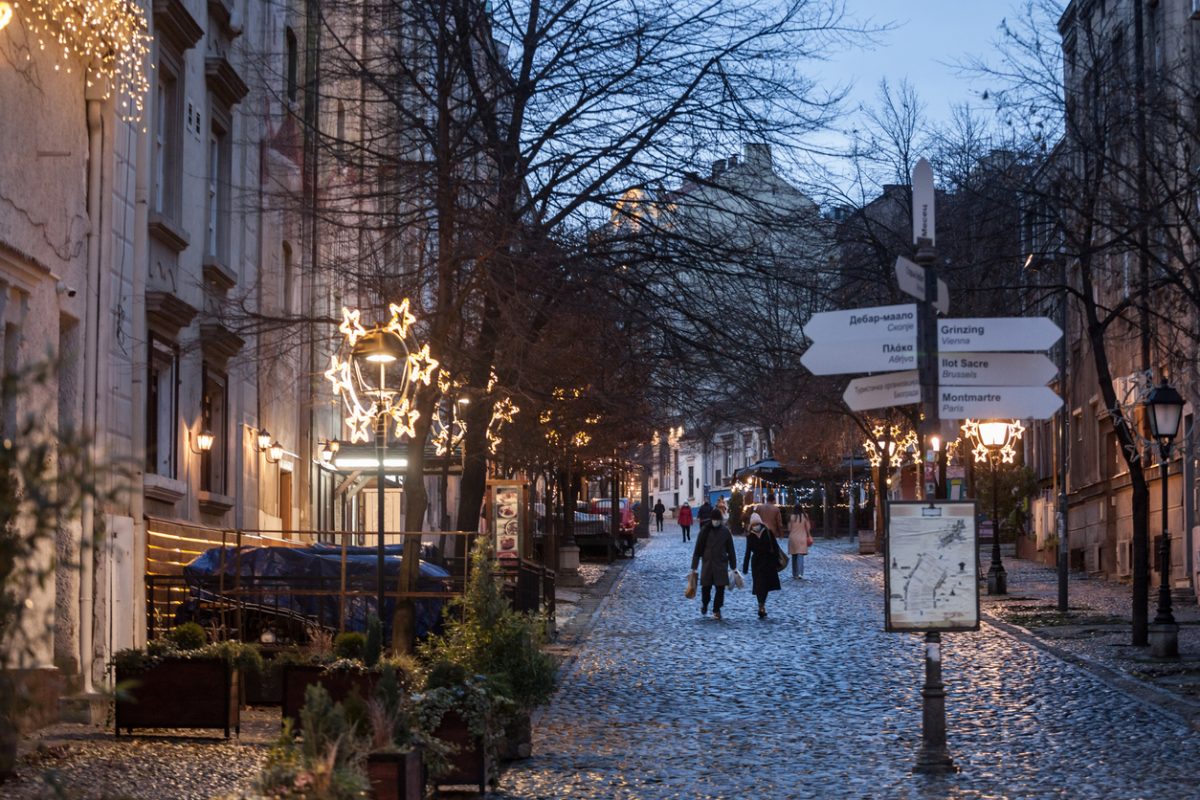
If you’re at least somewhat familiar with the Orthodox Christmas, you’ll know that there are a plethora of traditions that take place on Christmas Day – Božić, and Christmas Eve – Badnji Dan.
The first one begins way earlier than that, and that is the 40-day fast which ends on Christmas Day.
This means that animal-based food isn’t eaten during the feast on Christmas Eve. Instead, food that is usually served includes beans, fish, and the special česnica.
Česnica is a special kind of bread which is only prepared once a year, on Christmas Eve. A single coin is placed inside the česnica and then it is evenly split apart for everyone at the table. Whoever gets lucky and finds the coin in their piece is believed to have good fortune throughout the following year.
Another tradition is the picking of the Yule log on the morning of Christmas Eve. The men of the family go to the forest together, cut up some branches, and return them to their home.
They are later set on fire to burn through Christmas Eve.
Some churches also organize Christmas Eve celebrations for a lot of people, where big bonfires are made, and an even bigger česnica is prepared for all the people.
Christmas Day is celebrated over a family lunch the following day. As the fast is over by then, food often includes roasted pork and other variations of meat, accompanied by traditional desserts and all sorts of alcoholic drinks.
What to eat in Serbia at Christmas
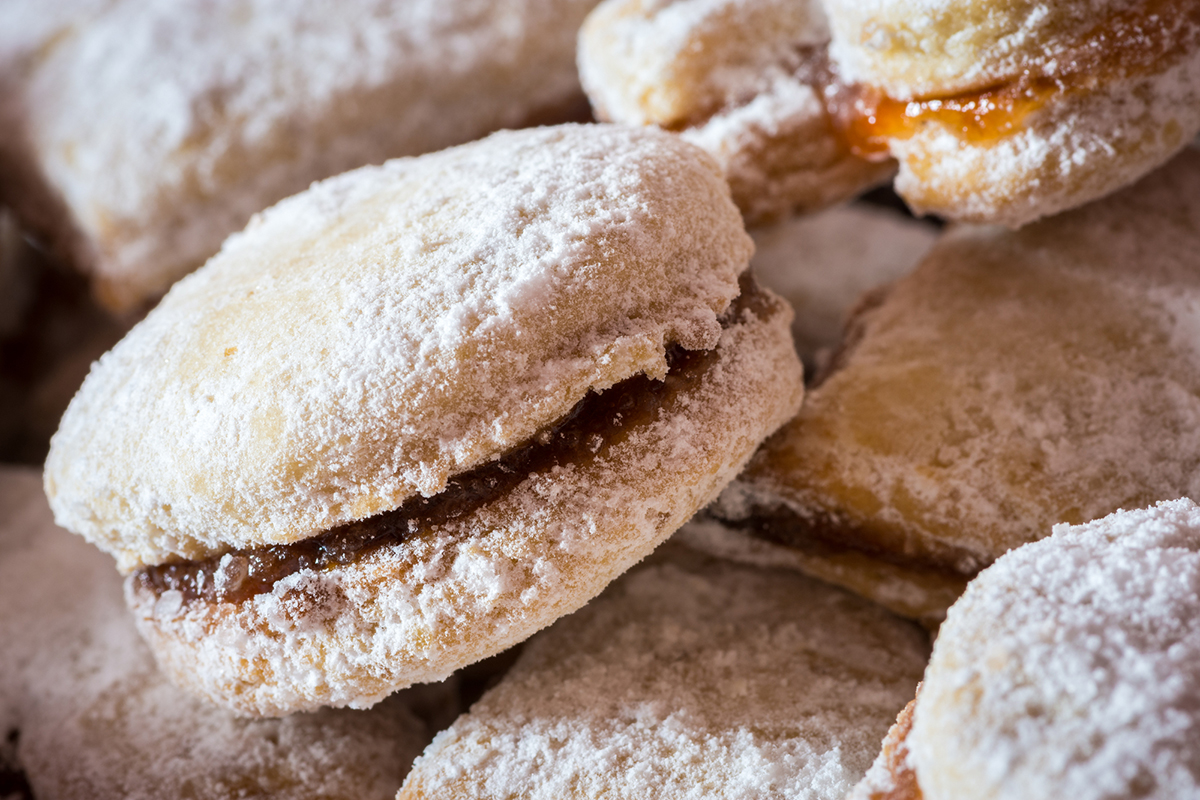
Balkan, and especially the Serbian cuisine is known all over the world for its rich, hearty cuisine.
Combining this with the fact that many seasonal dishes are only prepared during the Christmas and holiday seasons makes Serbia the perfect destination for anyone wanting to try some new and delicious things.
If you want to eat like a true Serbian, the first thing you’ll have is some ‘meze’ – a collection of different meats and cheeses to open up your appetite, followed by a bowl of hot soup, usually chicken.
After that, you can move on to the main dish.
Depending on your taste, you can enjoy famous Serbian barbeque, the juiciest there is, or sarme, a traditional Serbian dish consisting of meat and rice inside cabbage leaves.
The selection of desserts is also very varied. Serbian baklava with walnuts can rival the Turkish one, and the mini cakes are a great combination with a usual post-meal coffee.
Other traditional sweets include the orasnica, vanilice, and oblande, all of which can be found in most restaurants and bakeries in the country.
And now for the most important thing in every Serbian household, the drinks.
You can’t talk about Serbian beverages without first mentioning the rakija, a popular brandy that comes in many different flavours – plum, apricot, pear…
Another drink that can’t be overlooked is mulled wine, which is present all throughout the Christmas markets and ski destinations.
Tips for visiting Serbia at Christmas
Temperatures can get pretty low during the Christmas period in Serbia.
If you plan on a lot of sightseeing, make sure to pack warm clothes and avoid becoming ill!
Winds are also very common in the northern part of the country, so plan around them as well.
Serbia is very well connected via buses and trains, so if you’re coming without a car, you don’t have to worry about transport!
Belgrade and Novi Sad, the two most popular locations, are connected by a super-fast train called Soko, which can take you from one place to the other in around 30 minutes, allowing for an easy 1-day trip.
Are you ready for a Serbian Christmas?
From the bustling gatherings in historic cities to peaceful moments in the snowy mountains, there’s nowhere that does Christmas quite like Serbia.
Don’t forget to save this guide for your December trip to the country!

